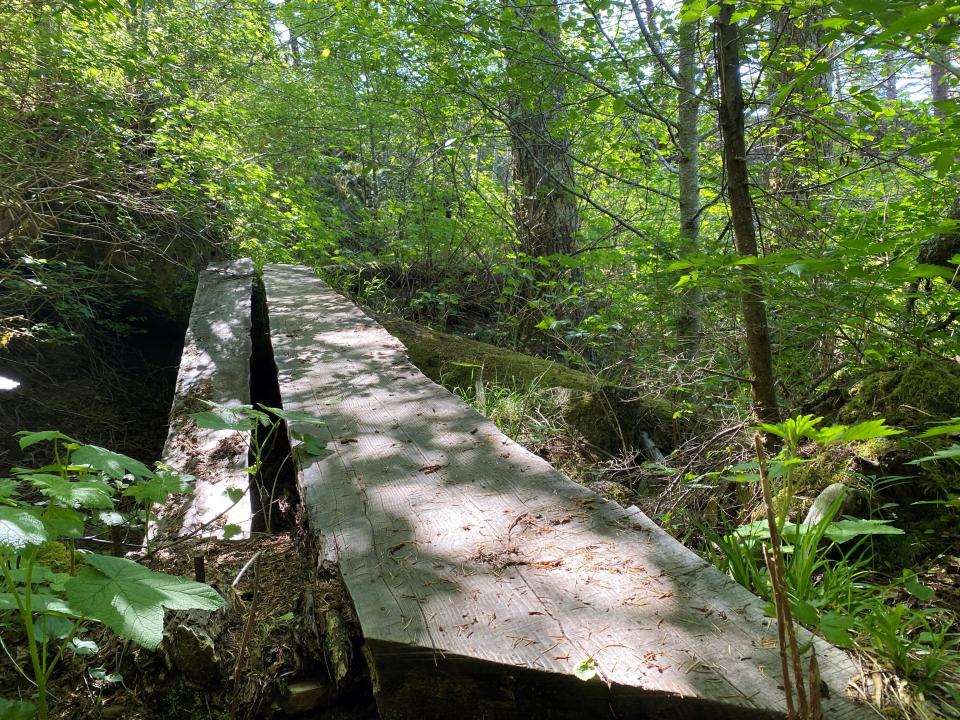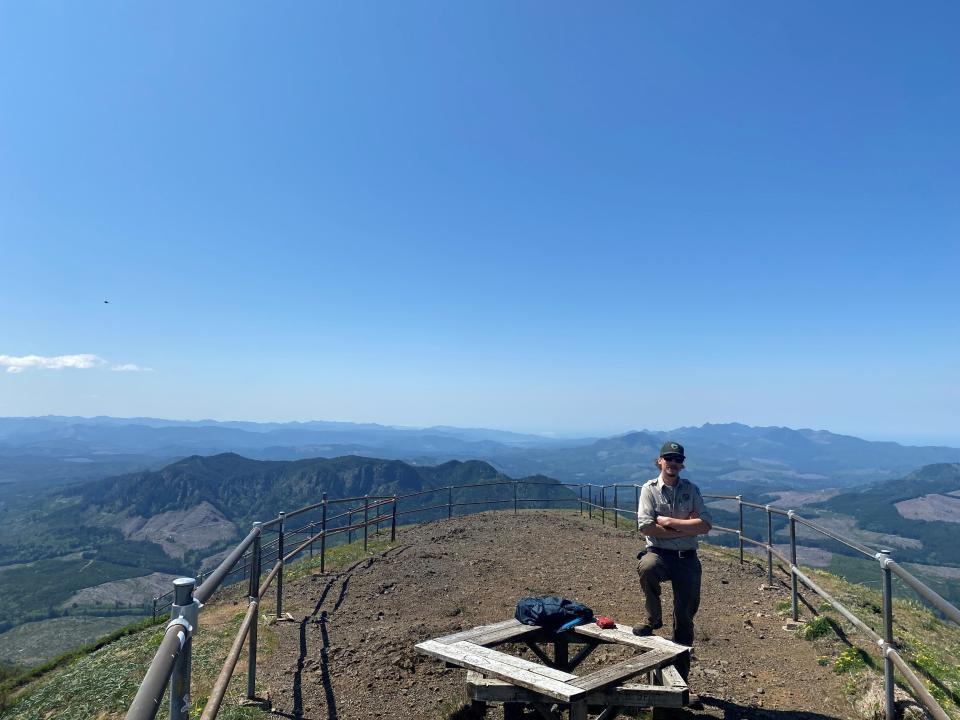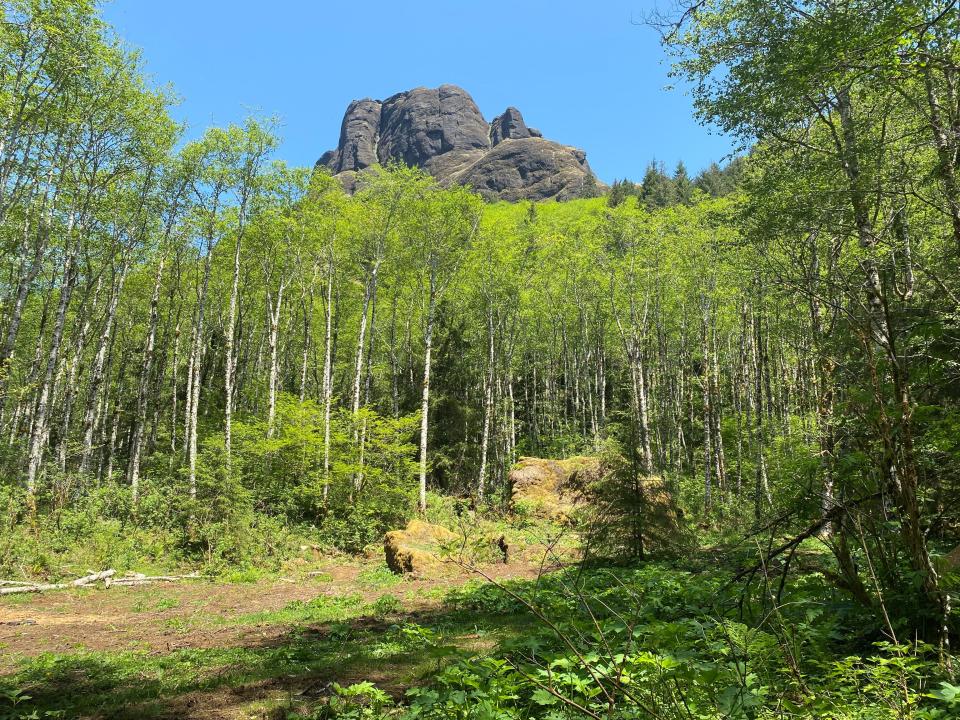Why has Oregon's iconic Saddle Mountain stayed closed for so long?
There aren’t many places like the Saddle Mountain State Natural Area. The 3,288-foot summit, nestled between Portland and Seaside, has rare views over the Columbia River, Pacific Ocean and Coast Range. It's home to unique flora and fauna and its towering old growth makes it a favorite hiking spot for many.
But Saddle Mountain has been closed on a regular basis, ever since 2020, by the Oregon Parks and Recreation Department. They closed the park during the COVID-19 pandemic. Then they kept it closed due to staffing shortages. Now it remains closed due to "failed infrastructure and safety concerns."
Parks officials say a broken bridge and other hazards on the trail make it impassable for rescue teams carrying lifesaving equipment like gurneys. Officials are aiming to end the closure in late summer to salvage what’s left of the recreation season while providing enough time in the interim to address necessary work.
“Hopefully, we are able to open and we are trying to salvage some of this year’s recreational season,” said Eric Crum, the North Coast district beach ranger for Oregon State Parks. “Hopefully by late, end of summer, we’re trying to get it open by then.”
Bulk of the work still ahead at Saddle Mountain
The park’s issues go beyond a broken bridge near the half-mile mark. They include trail tread issues, a landslide area, broken crib walls and rusted, jagged gabion sections throughout the steep upper sections of the saddle. A common theme across most of the damaged sections is that while they are passable by a well-versed hiker, they're not passable for first responders carrying rescue equipment. Officials site this as one of the primary reasons the trail remains closed.
During the park’s extended closure, not a whole lot has changed. Much of the physical work lays untouched. But to parks officials who aim to have the park reopened by late summer, slow progress is still progress.
“I think it frustrates people when they see the park just sitting closed,” Crum said. “There’s a lot happening actually. We’re going through the proper steps. We are trying to open.”

One reason for the slow progress is getting required permits.
“With the bridge failure for instance, I think a lot of people maybe think, ‘Well, just put a new bridge in’ or ‘just fix that,’ but it’s a little more complicated than that,” Crum said. “There’s a lot of process and a lot of permits that need to happen before you can just go build a bridge.”
Before moving forward with work, state parks needs to get approval from local tribes, the State Historic Preservation Office, and numerous other permits and mandatory reviews.

With so much work left to do and little time before the targeted reopening, officials have been forced to prioritize some work, put other things on the back burner, and move away from other features all together. This of course means significant work will continue after the park’s reopening.
The broken bridge, however, is one thing parks officials will have done before the reopening. The repair plan is to reroute around it, or to rebuild it altogether. It is uncertain which way officials will go on this, but they have already received tribal approval for a slight reroute.
Campground out, new day use in
Saddle Mountain will look different when it welcomes back visitors later this summer.
The path to its striking saddle-shaped viewpoint and prominent basalt summit will likely be quite similar barring a slight reroute, but the area near the trailhead at the top of Saddle Mountain Road will host a variety of changes.

The small, yet beloved campground will no longer host overnight guests. While the park’s inability to provide potable water is the primary reason for the move away from overnight stays, officials also cite intensified state park staffing issues and instances of theft at the campground as reasons to move on.
“The transition to a vault toilet and no available drinking water no longer meets OPRD minimum campground standards," said park manager Ben Cox. "There were also high levels of vandalism and theft when the campground was operational. While the labor burden to operate a remote campground at acceptable service levels is a challenge, the choice was really to focus on better day-use experiences at Saddle Mountain.”
Officials foresee not all changes to the park will be unwelcome. The day use area will be improved, and recent forestry work allows for views of the mountain’s summit from the picnic tables, which sit in an expanded space a short walk from the parking lot.
A silver lining
Following Crum’s truck past the two gates up the access road on a recent day, it struck me I was likely one of few people to make it this far in the better part of three years, at least legally.
Maybe it softens the blow to think of the public access hiatus as a brief respite for the ecosystem, a break from the chaos and crowds that can come with ecotourism.
There was no shortage of reminders of this as I hiked with Crum up to the summit. The trail had become overgrown with native vegetation and wildflowers, the muddy sections covered with the tracks and scat of elk, cougar, coyote and deer. There were elk scrapes on alder trees beside picnic tables not used in years.
The overstory offered a constant buzz of birds. Crum attributed the chirps, whistles and croaks to rare birds.
When the park reopens later this summer as a day use only destination, perhaps the new era will help carry on the beautiful, cyclical trend of nature’s return.
Charles Gearing is an outdoors journalism intern for the Statesman Journal. He can be reached at cgearing@gannett.com
This article originally appeared on Salem Statesman Journal: Oregon's Saddle Mountain has been regularly closed since 2020

